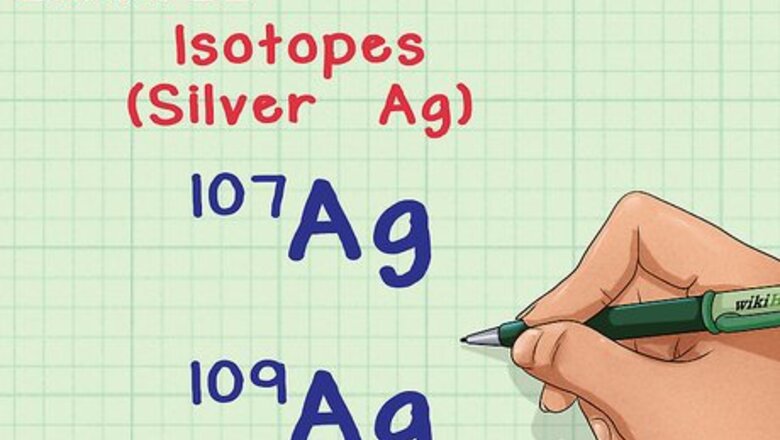
views
- Look up the mass of each isotope in atomic mass units, then take note of each isotope's abundance.
- Convert the abundances into decimals by dividing by 100.
- Find the weighted average of of the atomic mass of the stable isotopes using a weighted average calculation, and check your answer on the periodic table.
Calculating Average Atomic Mass
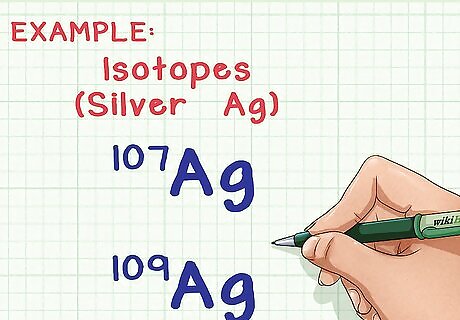
Understand isotopes and atomic masses. Most elements can naturally occur in multiple forms, or isotopes. The mass number for each isotope is the sum of numbers of protons and neutrons in the nucleus. Each proton and each neutron weigh 1 atomic mass unit (amu).The only difference between two isotopes of the same element is the number of neutrons per atom, which affects the atom's mass. However, the element always has the same number of protons. The average atomic mass of the element takes the variations of the number of neutrons into account, and tells you the average mass per atom in a typical sample of that element. For example, the element silver (Ag) has two naturally occurring isotopes: Ag-107 and Ag-109 (or Ag and Ag). Isotopes are named after the "mass number," or the sum of protons and neutrons in one atom.This means Ag-109 has two more neutrons per atom than Ag-107, giving it slightly more mass.

Look up the mass of each isotope. You'll need two pieces of information for each isotope, which you can look up in a reference book or an online source such as webelements.com. The first is the atomic mass, or the mass of one atom of each isotope. Isotopes with more neutrons have more mass. For example, the silver isotope Ag-107 has an atomic mass of 106.90509 amu (atomic mass units). The isotope Ag-109 is slightly heavier with a mass of 108.90470. The last couple decimal places might be slightly different in different sources. Don't include any numbers in parentheses after the mass.

Write down the abundance of each isotope. The abundance tells you how common the isotope is, as a percentage of all atoms of the element. Each isotope contributes proportionally to its abundance (the more abundant the isotope, the more it will contribute to the average atomic mass). You can find this in the same source you found the mass. The abundances of all isotopes should add up to 100% (though it might be slightly off due to rounding errors). The isotope Ag-107 has an abundance of 51.86%. Ag-109 is slightly less common with an abundance of 48.14%. This means that a typical sample of silver is 51.86% Ag-107 and 48.14% Ag-109. Ignore any isotopes that do not have an abundance listed. These isotopes do not occur naturally on Earth.
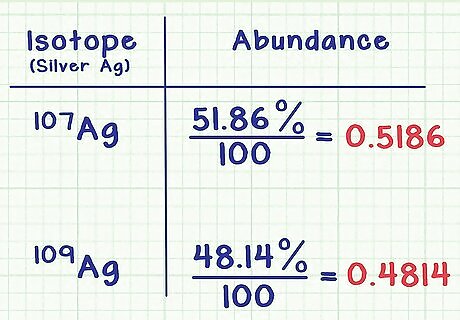
Turn your abundance percentages into decimals. Divide the abundance percentage by 100 to get the same value as a decimal. In the sample problem, the abundance figures are 51.86 / 100 = 0.5186 and 48.14 / 100 = 0.4814.
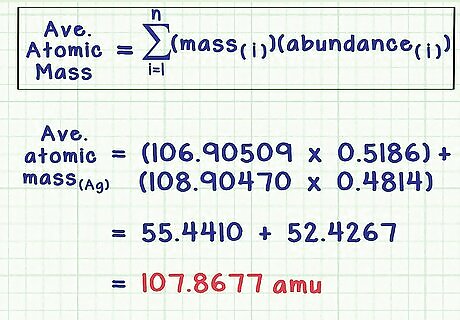
Find the weighted average of the atomic mass of its stable isotopes. The average atomic mass of an element with n isotopes equals (massisotope 1 * abundanceisotope 1) + (massisotope 2 * abundanceisotope 2) + ... + (massisotope n * abundanceisotope n. This is an example of a "weighted average," meaning that more common (more abundant) masses have a greater effect on the result. Here's how to use this formula for silver: Average atomic massAg = (massAg-107 * abundanceAg-107) + (massAg-109 * abundanceAg-109)=(106.90509 * 0.5186) + (108.90470 * 0.4814)= 55.4410 + 52.4267= 107.8677 amu. Look up the element on a periodic table to check your answer. The average atomic mass is usually written underneath the element symbol.
Using the Result
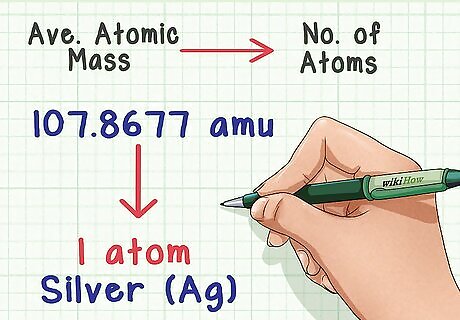
Convert mass to number of atoms. The average atomic mass tells you the relationship between mass and number of atoms in a typical sample of the element. This is useful in chemistry laboratories because it is almost impossible to count the number of atoms directly, but easy to measure mass. For example, you can weigh a sample of silver and predict that each 107.8677 amu of mass contains one silver atom.
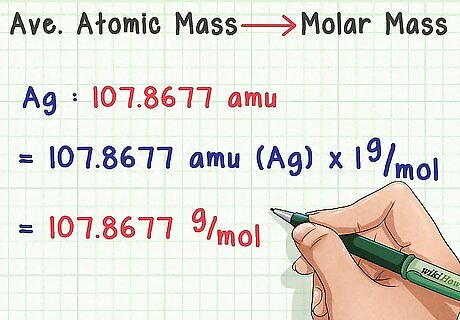
Convert to molar mass. Atomic mass units are very small, so chemists typically weigh samples in grams instead. Fortunately, these concepts are defined to make the conversion as easy as possible. Just multiply the average atomic mass by 1 g / mol (the molar mass constant) to get an answer in g / mol instead. For example, 107.8677 grams of silver contain one mole of silver atoms on average.
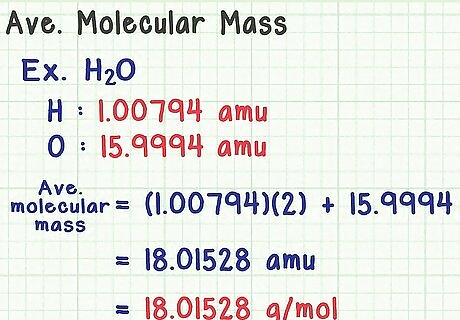
Find average molecular mass. Since a molecule is just a collection of atoms, you can add the masses of the atoms together to find the mass of the molecule. If you use the average atomic masses (instead of the mass of a specific isotope), the answer is the average mass of the molecule as found in a naturally occurring sample. Here's an example: A molecule of water has the chemical formula H2O, so it contains two hydrogen (H) atoms and one oxygen (O) atom. Hydrogen has an average atomic mass of 1.00794 amu. Oxygen atoms have an average mass of 15.9994 amu. The average mass of a molecule of H2O equals (1.00794)(2) + 15.9994 = 18.01528 amu, equivalent to 18.01528 g/mol.


















Comments
0 comment